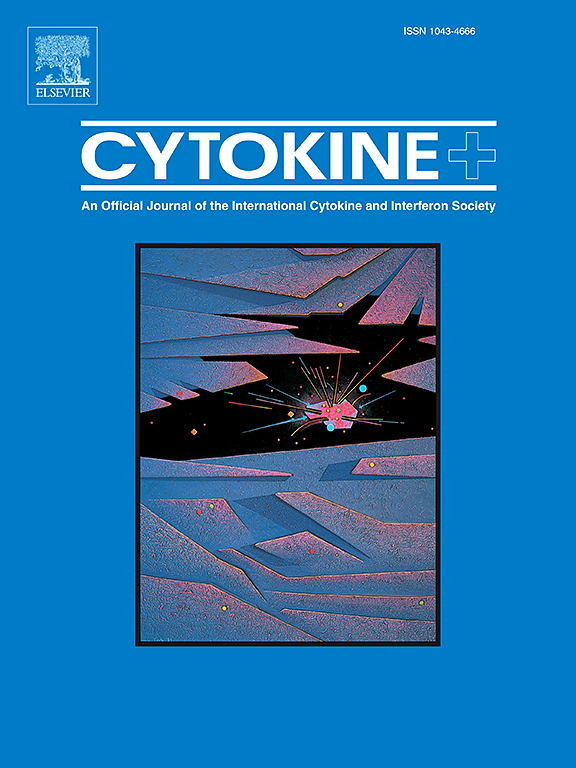敲除或用甲酰基肽受体1拮抗剂治疗通过抑制炎症保护小鼠免于败血症。
IF 3.7
3区 医学
Q2 BIOCHEMISTRY & MOLECULAR BIOLOGY
引用次数: 0
摘要
背景:脓毒症是一种与感染相关的全身性炎症,死亡率高。免疫细胞中甲酰基肽受体1 (FPR1)的激活可促进其趋化和炎症反应,导致败血症过程中免疫反应失衡。FPR1阻断确实减少了细菌感染期间的全身炎症反应。因此,本研究验证了敲除FPR1或用FPR1拮抗剂治疗可以保护动物免于败血症相关死亡的假设。方法:对野生型(WT)或Fpr1基因敲除(Fpr1-/-) C57BL/6小鼠进行盲肠结扎穿刺(CLP),诱导不同程度的脓毒症。一些WT小鼠用FPR1拮抗剂肉桂基苯丙氨酸-(D)亮氨酸-苯丙氨酸-(D)亮氨酸-苯丙氨酸(cFLFLF)治疗。评估各组小鼠的存活率,并于脓毒症诱导后6和24小时采集血液和腹膜冲洗标本进行生化分析。我们还招募了143例脓毒症患者,收集其血液和中性粒细胞样本,采用RT-qPCR分析FPR1的表达,并记录其28天的生存期。结果:无论Fpr1-/-或cFLFLF治疗,所有小鼠均在高度脓毒症后第6天死亡。Fpr1基因敲除或cFLFLF治疗可提高中低度脓毒症小鼠的存活率,同时血清和腹膜炎症标志物(IL-6、IL-1β和TNF-α)水平显著降低。脓毒症的诱导增加了血液中性粒细胞的百分比和腹膜细菌集落形成单位的计数,但降低了WT小鼠的体温,但在Fpr1-/-小鼠或cflflf治疗的脓毒症小鼠中没有。临床资料分析表明,序贯器官衰竭评分和年龄是28天死亡率的独立危险因素。结论:Fpr1基因敲除或cFLFLF治疗可提高中低度脓毒症动物的存活率,部分原因是在脓毒症早期抑制腹部和全身炎症。中性粒细胞中FPR1蛋白水平不是脓毒症患者28天死亡率的独立危险因素。本文章由计算机程序翻译,如有差异,请以英文原文为准。
Knockout or treatment with an antagonist of formyl peptide receptor 1 protects mice from sepsis by inhibiting inflammation
Background
Sepsis is an infection-related systemic inflammation with high mortality rates. Activation of formyl peptide receptor 1 (FPR1) in immune cells can promote their chemotaxis and inflammatory response, which imbalances immune response during the process of sepsis. FPR1 blockade did diminish systemic inflammatory response during bacterial infection. Accordingly, this study tested the hypothesis that knockout or treatment with an antagonist of FPR1 could protect animals from sepsis-related death.
Methods
Wild-type (WT) or Fpr1 gene knockout (Fpr1−/−) C57BL/6 mice were subjected to the process of cecal ligation and puncture (CLP) to induce different grades of sepsis. Some WT mice were treated with cinnamoylphenylalanine-(D)leucine-phenylalanine-(D)leucine-phenylalanine (cFLFLF), a FPR1 antagonist. Their survival rate was evaluated, their blood and peritoneal flushing samples were collected at 6 and 24 h after the induction of sepsis for biochemical analyses. We also enrolled 143 sepsis patients, their blood and neutrophil samples were collected for analysis of FPR1 expression by RT-qPCR, and their 28-day survival was recorded.
Results
All mice died by day 6 after high grade sepsis regardless of Fpr1−/− or cFLFLF treatment. Fpr1 gene knockout or cFLFLF treatment increased the survival rate of mice with a mid-to-low grade of sepsis, accompanied by a significant decrease in the levels of serum and peritoneal inflammatory markers (IL-6, IL-1β and TNF-α). Induction of sepsis increased the percentages of blood neutrophils, and the counts of peritoneal bacterial colony forming units, but decreased body temperature in WT mice, but not in the Fpr1−/− mice or cFLFLF-treated sepstic mice. Analysis of clinical data indicated that sequential organ failure assessment score and old age were independent risk factors for 28-day mortality.
Conclusion
Fpr1 gene knockout or cFLFLF treatment increased the survival rate of animals with a mid-to-low grade of sepsis, in part by inhibiting abdominal and systemic inflammation during the early period of sepsis. FPR1 protein level in neutrophils was not an independent risk factor of 28-day mortality in sepsis patients.
求助全文
通过发布文献求助,成功后即可免费获取论文全文。
去求助
来源期刊

Cytokine
医学-免疫学
CiteScore
7.60
自引率
2.60%
发文量
262
审稿时长
48 days
期刊介绍:
The journal Cytokine has an open access mirror journal Cytokine: X, sharing the same aims and scope, editorial team, submission system and rigorous peer review.
* Devoted exclusively to the study of the molecular biology, genetics, biochemistry, immunology, genome-wide association studies, pathobiology, diagnostic and clinical applications of all known interleukins, hematopoietic factors, growth factors, cytotoxins, interferons, new cytokines, and chemokines, Cytokine provides comprehensive coverage of cytokines and their mechanisms of actions, 12 times a year by publishing original high quality refereed scientific papers from prominent investigators in both the academic and industrial sectors.
We will publish 3 major types of manuscripts:
1) Original manuscripts describing research results.
2) Basic and clinical reviews describing cytokine actions and regulation.
3) Short commentaries/perspectives on recently published aspects of cytokines, pathogenesis and clinical results.
 求助内容:
求助内容: 应助结果提醒方式:
应助结果提醒方式:


